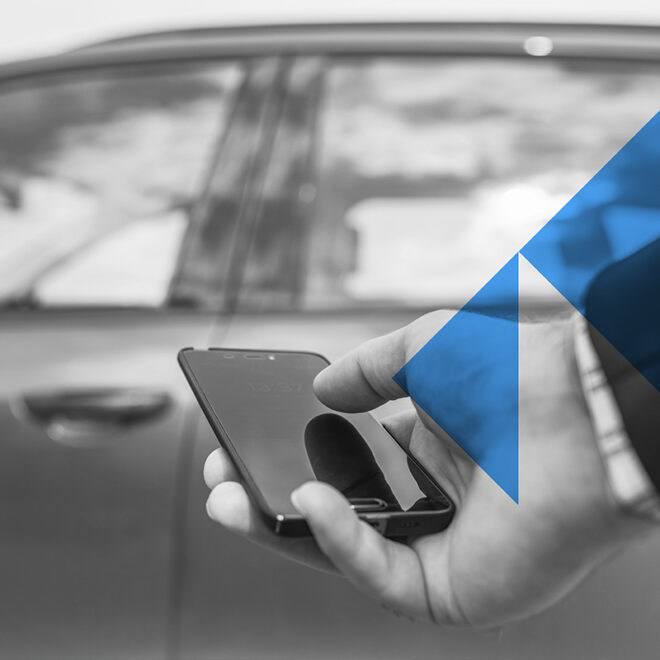The short-range wireless connectivity landscape continues to evolve at a rapid pace. Technologies such as Bluetooth®, Wi-Fi, and Ultra-wideband (UWB), which were once focused predominantly on sending and receiving data between devices, are becoming increasingly multi-functional. Most recently, with the introduction of Bluetooth® Channel Sounding, Bluetooth technology has added secure, fine-ranging capabilities to its suite of positioning features to enable true distance awareness.
Bluetooth® Channel Sounding helps support a wide range of use cases that take advantage of highly accurate and secure device positioning, encompassing personal item tracking and digital keys to a whole host of use cases that can benefit from knowing the precise distance between two different Bluetooth® devices. With the massive ecosystem of Bluetooth devices on the market, and the potential for nearly any Bluetooth device to now be accurately located as part of a Find My network, these improvements can help enable a significant acceleration of true distance awareness for connected devices in the years to come.
Bluetooth® Channel Sounding and UWB
There are several wireless technologies on the market that can provide distance measurement capabilities. Each has its own unique benefits and tradeoffs in terms of accuracy, power consumption, latency, range, scalability, ease of deployment, ecosystem enablement, and cost, among many others. The centimeter-level accuracy, ubiquitous availability of Bluetooth smartphones and platform devices, lower chipset costs, lower power consumption, reduced design complexity, and the avoidance of an additional radio could prove compelling enough to leverage standalone Bluetooth® Channel Sounding as an alternative to UWB fine ranging across many distance measurements use cases.

In some application segments, Bluetooth® Channel Sounding will compete with UWB, and in others, they will work directly together to enhance the overall positioning performance. However, it is important to note that different use cases for secure ranging will have different requirements.
While some applications may require UWB’s higher level of precision, for many, this will be overkill, and some OEMs may not be able to justify the cost and complexity of embedding an additional UWB radio onto their device for this sole purpose. For example, if we take the personal tracker use case, there may be little benefit in knowing whether an item is millimeters away versus tens of centimeters or even one meter away, depending on the size of the item. Therefore, some developers may choose to develop a Bluetooth® Channel Sounding solution that provides strong enough performance, strong interoperability, and reduced cost and power consumption, while others may opt for a higher-performance solution with the tradeoff of additional cost and greater power consumption.
In phone-as-key access-control applications, knowing that the user is in sub-meter-level proximity should typically be sufficient for locking and unlocking a door. Today, there are many Bluetooth LE door locks already on the market that leverage the installed base of Bluetooth LE mobile devices for automatic unlocking on approach. Bluetooth® Channel Sounding can provide enhanced security and better user experiences over RSSI by opening only when the user is in closer proximity while avoiding the cost of an additional UWB radio.
Similarly, when tracking a limited number of high-value assets that are within a warehouse, hospital, campus, or industrial environment, distances of between one and five meters can often be sufficient to locate an item efficiently. However, if the item is smaller, such as a tool, having the additional centimeter-level capabilities of Bluetooth® Channel Sounding can be beneficial.
![]()
FEATURED MARKET RESEARCH
How Bluetooth® Channel Sounding Will Shape the Future of Device Positioning
This market research note explores how Bluetooth® Channel Sounding is set to transform wireless positioning technology by enabling secure, centimeter-level distance measurements.
The benefits of Bluetooth® Channel Sounding
Bluetooth® Channel Sounding offers product developers a number of high-value benefits to better support device capabilities, including:
High-accuracy distance measurement: Bluetooth® Channel Sounding leverages multi-channel, phase-based ranging (PBR) to enable highly accurate fine ranging between Bluetooth connected devices. Bluetooth® Channel Sounding offers centimeter-level accuracy over considerable distances, meeting the needs of the vast majority of applications and allowing even the simplest connected devices to take advantage of true distance awareness.
High security: The combined use of PBR and RTT in Bluetooth® Channel Sounding ensures that the vehicle and building door locks are only opened when the authorized digital key or fob is actually within a certain distance, making them much less susceptible to man-in-the-middle relay attacks.
Ubiquitous adoption in tracking devices: Bluetooth® LE has a ubiquitous presence in consumer platform devices such as smartphones, PCs, tablets, and wearables, creating a huge installed base of potential initiator devices. While there may need to be hardware upgrades to support Bluetooth® Channel Sounding, there are some devices on the market that can be upgraded to support this feature. And though the presence of UWB fine-ranging solutions is expected to grow in the years to come, the rollout of Bluetooth® Channel Sounding compatible hardware is expected to be much more rapid than the rollout of UWB technology.

Enormous Bluetooth device ecosystem: With nearly eight billion Bluetooth devices expected to ship in 2029 alone, there are an enormous number of devices that can potentially incorporate Bluetooth Channel Sounding over time. While some more advanced implementations of Bluetooth® Channel Sounding with multiple antennas may be more complex, single antenna implementations can enable Bluetooth® Channel Sounding without impacting the design of existing Bluetooth® LE products, taking advantage of the Bluetooth chip already on the device to create a highly scalable ecosystem of devices that can become part of a wide range of connected device solutions, such as a Find My network.
Reduced cost and complexity: In contrast to UWB, implementing Bluetooth® Channel Sounding does not require the integration of an additional UWB radio into the device, keeping the BOM cost down while adding secure ranging. For example, a Bluetooth LE Audio-enabled true-wireless earbud or charging case could implement Bluetooth® Channel Sounding without the need to redesign the board to incorporate a UWB chip, reducing the cost, complexity, and time to market while enabling that device to be accurately tracked when lost. As a Bluetooth® LE chip is already required by the device itself for audio purposes, the only additional cost is to leverage a Bluetooth® Channel Sounding capable chipset.
Interoperability: One of the major benefits of being part of the Bluetooth ecosystem is that all devices will also be fully interoperable. This means that a Bluetooth® Channel Sounding compliant smartphone or mobile device from one vendor will be able to track a Bluetooth® Channel Sounding device from another vendor. This will help to create a scalable ecosystem of solutions which can address multiple devices and applications.
Reduced power consumption: Bluetooth® Channel Sounding takes advantage of the inherent low-power characteristics of Bluetooth LE technology. This is likely to be a key factor when deciding what technology to embed in battery-sensitive devices requiring high-secure ranging.
Reliability: Bluetooth® Channel Sounding solutions that utilize multiple antennas can help mitigate the impact of multipath reflections on accuracy. This can help increase the reliability of distance awareness across a diverse range of environments.
![]()
FEATURED MARKET RESEARCH
How Bluetooth® Channel Sounding Will Shape the Future of Device Positioning
This market research note explores how Bluetooth® Channel Sounding is set to transform wireless positioning technology by enabling secure, centimeter-level distance measurements.
Why choose Bluetooth® Channel Sounding
![]()
One of the major benefits that could accelerate the potential of Bluetooth® Channel Sounding is that Bluetooth technology is already embedded within many of these wireless devices that have the potential to be tracked. Supporting Bluetooth® Channel Sounding could enable many new device categories to offer tracking functionality without the need to equip them with dedicated smart tags or to embed an additional UWB radio. In particular, low-cost single antenna IoT solutions, while less accurate, can provide sufficient distance awareness to find the item without the need for developers to invest in new technologies, additional radios, or more complex product designs. This, combined with the ubiquitous presence of Bluetooth® LE in mobile devices, may encourage more end-device vendors to add support for Bluetooth® Channel Sounding solutions in their devices for a variety of use cases, including item tracking, presence detection, and proximity activation, among others.
While UWB penetration in smartphones is expected to grow in the coming years, only a quarter of smartphones shipped in 2023 came equipped with the technology. ABI Research expects a much swifter rollout of Bluetooth® Channel Sounding smartphones and other platform devices as compatible hardware proliferates. Furthermore, the flexibility of Bluetooth® Channel Sounding can enable it to prioritize different metrics and tailor it for specific applications that may need higher security, higher accuracy, lower latency, or lower power consumption.
Learn more about How Bluetooth® Channel Sounding Will Shape the Future of Device Positioning.
![]()
FEATURED INNOVATION
Bluetooth® Channel Sounding
Bluetooth® Channel Sounding is a new secure, fine-ranging feature that promises to enhance the convenience, safety, and security of Bluetooth connected devices. By infusing billions of everyday devices with true distance awareness, Bluetooth® Channel Sounding unlocks a world of possibilities for developers, freeing them to imagine and create innovative experiences.



























